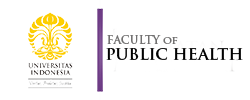Dimensi Iklim Keselamatan dan Perbandingan Variabel di PT. XYZ Tahun 2021
Abstract
Keywords
References
Abdullah Musa, R., Fadhli, A., Kusminanti, Y., Erwandi, D., & Lestari, F. (2015). Behaviour intention analysis among workers at oil and gas company. In Society of Petroleum Engineers - SPE/IATMI Asia Pacific Oil and Gas Conference and Exhibition, APOGCE 2015.
Astuti, Y. H. N. (2010). Peran ‘Safety Leadership’ dalam Membangun Budaya Keselamatan yang Kuat. Seminar Nasional VI SDM Teknologi Nuklir Yogyakarta, ISSN 1978-(November), 33–40.
Bass, B. M. (1990). From transactional to transformational leadership: Learning to share the vision. Organizational Dynamics, 18(3), 19–31.
Bennett, S. (2012). Building Sustainable Leadership. Safety Is about Leadership
ASSE Symposium, (November), 1–2.
Cheyne, A., Cox, S., Oliver, A., & Tomás, J. M. (1998). Modelling safety climate in the prediction of levels of safety activity. Work and Stress, 12(3).
Cooper, M. D. (2001). Improving Safety Culture – a Practical Guide. Applied Behavioral Science.
Hecker, S., & Goldenhar, L. (2014). Understanding Safety Culture and Safety Climate in Construction : Existing Evidence and a Path Forward. Safety Culture/Climate Workshop, 2–19.
Lestari, F., A, S., I, S., & Gunawan, F. (2016). Manajemen Keselamatan Operasi: Membangun Keunggulan Operasi dalam Industri Proses, 345.
Lestari, F., Sunindijo, R. Y., Loosemore, M., Kusminanti, Y., & Widanarko, B. (2020). A safety climate framework for improving health and safety in the Indonesian construction industry. International Journal of Environmental Research and Public Health, 17(20).
Mangiring, P., & Lestari, F. (2018). Construction Project Safety Climate in Indonesia. KnE Life Sciences, 4(5).
Neal, A., & Griffin, M. A. (2002). Safety Climate and Safety Behaviour. Australian Journal of Management, 27(1_suppl), 67–75.
O’Dea, A., Flin, R., & Dea, A. (2003). The Role of Managerial Leadership in Determining Workplace Safety Outcomes. Health and Safety Information.
Phua, F. T. T. (2018). The role of organizational climate in socially embedding construction firms’ sustainability goals. Construction Management and Economics, 36(7).
Plant, T., Aurell, M., & Andoh, M. (2013). The relationship between leadership style and safety climate: A case study of Goldfields Ghana limited, Tarkwa-cil plant. School of Management Blekinge Institute of Technolog.
Sherif Mohamed. (2002). Safety climate in the construction site environments. Journal of Construction Engineering and Management, 9364(November).
Yule, S. (2008). Safety culture and safety climate: A review of the literature. Industrial Psychology Research Centre, (1980).
Zohar, D. (1980). Safety climate in industrial organizations: Theoretical and applied implications. Journal of Applied Psychology, 65(1).
Zou, P. X. W., & Sunindijo, R. Y. (2015). Strategic safety management in construction. Strategic Safety Management in Construction.
DOI: 10.59230/njohs.v2i1.5238
Refbacks
- There are currently no refbacks.







.png)
